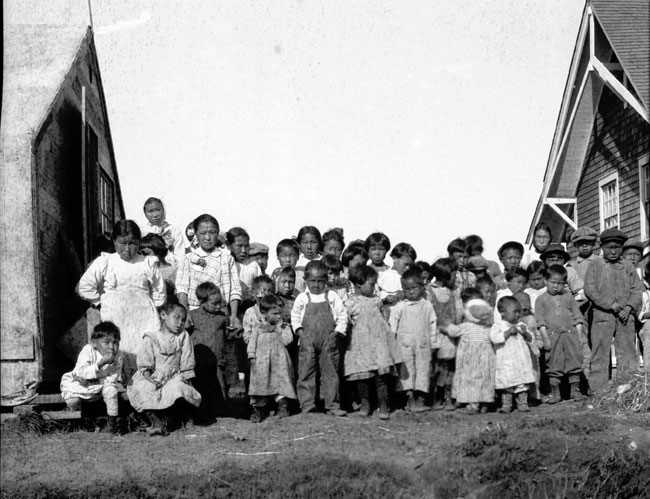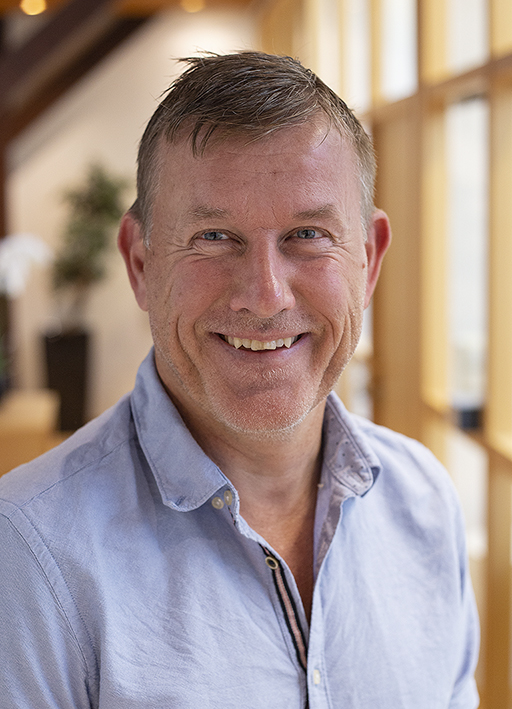Meet the Project: Social Science Meets Biology: Indigenous People and Severe Influenza Outcomes

Influenza pandemics are pressing global threats to human life and security. The state of the art in medical, epidemiological and social science research on the extreme vulnerability of Indigenous people to severe influenza disease is carried out in silos, and the factors uniting the infectious disease experiences of Indigenous peoples across continents of the world are rarely considered in concert.
Professor at Oslo Metropolitan University (OsloMet) Svenn-Erik Mamelund has moved his office to CAS to lead the project Social Science Meets Biology: Indigenous People and Severe Influenza Outcomes, the first CAS project led by an OsloMet scholar.
Mamelund is president of the Norwegian Demographic Society and the head of Centre for Research on Pandemics & Society – An OsloMet Centre of Research Excellence studying the societal aspects

of pandemics. He has been a leading expert on the demography of pandemic influenza for 27 years, especially influenza in Indigenous people in the Arctic. He has strong experience in translating research into preparedness policies and in building scenarios for health politicians during the 2009 pandemic and the COVID-19 pandemic. He also co-authored Norway’s first influenza pandemic preparedness plan in 2000 and has served as an expert at the ECDC (2018, 2022), WHO (2019) and UN (2021) meetings on community mitigation strategies for epidemic and pandemic influenza.
His CAS project will be the first interdisciplinary research project integrating genetic, epidemiological and social factors to unravel common factors for why Indigenous groups in Scandinavia, North America and Oceania are all highly susceptible to influenza, both in historical times and today. Prior research studied regions separately, or focused exclusively on genetic, social or historical risk factors. Mamelund and his team seek to see the whole picture: ‘Our project will for the first time explore biological, social and historical factors for why Indigenous peoples are associated with a higher risk of tragic pandemic outcomes across three continents’, he says.
The project is also very timely and relevant, as indigenous people are extremely vulnerable towards COVID-19:
‘The influenza pandemics of 1918, 2009, as well as the ongoing COVID-19 shows that some Indigenous peoples have an extremely high risk of severe disease outcomes, but reasons for this vulnerability is unclear. However, in a new study our group recently published, we show that Indigenous groups in Mexico had a 68% higher COVID-19 mortality rate than the non-Indigenous groups – and that some of the mortality differences were due to higher care-seeking delays and potentially a lower uptake of non-pharmaceutical interventions and vaccines.’
Building on both existing and new research collaborations, Mamelund’s team consists of a unique interdisciplinary blend of socially and medically oriented scientists specializing in Indigenous people, influenza pandemic disease burden patterns, and pandemic preparedness from 3 continents and 6 countries with Indigenous populations. The team consists of both experienced early-stage researchers, with the total of 15 researchers coming from various scientific backgrounds and using different methods.
First of all: What made you so interested in this field? How did you end up here?
'In the summer of 1995, I was a research assistant at Statistics Norway. I was employed to update estimates on the number of deaths for calendar years and cohorts and to write a report on the general development of mortality in Norway over the last 150 years. But there was one year that caught my eye: the year 1918. In the years before and after 1918, around 30,000 died each year, while the death toll for 1918 was 45,000. What on earth was it that killed 15,000 more than normal? Could it be World War I? No, it wasn't, we were standing outside as neutrals. I asked my co-author, he answered “the flu”. "Hey," I said, "isn't it a disease that comes every winter and only kills the elderly and sick"? The 1918 pandemic was different—it was caused by a new strain of the virus, so few had immunity and young adults were the victims. The disease was named the "Spanish flu”.
I fell in love and read the international literature as there was little research on how the pandemic affected Norway. I ended up writing a draft of a chapter on the “Spanish flu” that I wanted to include in the report. My older research colleague and co-author thought that the chapter was unnecessary and that I was shooting sparrows with cannons. I insisted on including the chapter, and was fortunately granted.
The "serendipity" moment I had in the summer of 1995 formed the basis for my research training and a love of the profession that has lasted 27 years and has not faded, on the contrary. Later I did a master's, PhD, and post-doc on the “Spanish flu” and since 2021 I have become a professor of pandemic studies and the founder and head of the Center for Research on Pandemics & Society (PANSOC) at OsloMet.'
Could you briefly explain your project? What is your main objective?
'The overarching aim of our project is to study historical and modern data to enhance the understanding of social and biological risk factors for severe pandemic disease in Indigenous people and improve pandemic preparedness. Our project has two interrelated overall objectives:
The first object is to increase our inadequate knowledge of the impact of pandemics among Indigenous risk groups in order to understand how ethnic disparities in exposure, susceptibility and access to healthcare leads to ethnic disparities in pandemic outcomes.
The second object is to aid policy makers in developing targeted interventions by ethnic status in addition to medical indications, to reach the WHO goal of 75% vaccine coverage for (seasonal) influenza, to reduce ethnic inequalities, to save lives, reduce social suffering and medical costs during the current and future pandemic outbreaks.'
Why is CAS the right arena for this type of research? What do you hope to accomplish during your year at CAS?
'The COVID-19 pandemic has shown us all that we can do meetings on Zoom or Teams. However, to foster the interdisciplinary research we are doing, we need to interact and exchange ideas daily on a long-term basis. We also hope that our 10.5 months at CAS can open up new avenues for research, science, friendship and scholarship. We have already had some serendipity moments and have new ideas for future ground-breaking research ideas to be submitted as part of a proposal to the European Research Council (ERC).'
You’ve been here at the Centre for a few months already. How has the research stay been so far?
'It has been fantastic. The building we use dates to 1887, the location with a fjord view is awesome, and the offices are all newly renovated this fall. The lunches served at CAS are delicious and the service from the administration and IT are wonderful. In the first two months, we have spent time settling in and consolidating the project and we have used this time to get to know each other. We have even been able to publish our two first papers. We have formalized several smaller research projects focused on topics of interest (e.g, the 1918 influenza pandemic among indigenous peoples in Labrador and Alaska, and the impact of other infectious diseases, such as measles, on outcomes of influenza illness). All the researchers involved in the program have signed on to one or more of these groups and are beginning to collaborate to meet the individual subproject aims. Some in our group are staying for the whole year while others are having shorter stays. Some will go back home in a month. We will miss them dearly but know that we have built strong relationships for collaborations in the short and long run and will continue to have their active involvement in our subprojects and overall activities.'
How did you decide which scholars to invite for a project of this scope?
'We had two recruiting strategies. The first was to invite top-class international researchers on the topic of pandemics and Indigenous peoples. We also actively sought researchers who were well-established as well as younger scholars just beginning their professional careers to help guarantee a successful future for pandemic studies. To secure diversity but also sound science, it has also been important for us to invite Indigenous scholars to the team, advisory board and as presenters and key-notes to a conference we will hold in May 2023. Before the conference, we will also hold a workshop lead by and for Indigenous researchers.'
CAS’ mission is to further excellent, fundamental, curiosity-driven research. Why, do you think, is fundamental research important?
'I am absolutely certain that in order to deliver high-quality research - and also have a so-called “societal impact” - you must find your own curiosity-driven passion or love in research, you must try to have as much fun as possible at work and stick to that - and this probably also applies to the labour market in general.
Even though pandemic researchers and the World Health Organization had warned against a new pandemic for several years before 2020, COVID-19 still caught many people unexpectedly. In the face of the "unexpected" pandemic, our knowledge was suddenly in extreme demand by both national and international media. If I hadn't been "allowed" to shoot sparrows with cannons a quarter of a century earlier and I had not received relatively free research funds to do my master's, PhD and Post-doc, I would hardly have been able to stand up to the enormous media pressure and have the professional confidence to participate in the debate in traditional and social media rather than withdrawing after receiving even threats and harassment. Without a long history of doing curiosity-driven research, it is further unlikely that I would have been in a position to succeed in obtaining new research funds, deliver relevant research and public health advises during COVID-19, guide students and receive financial support to lead the CAS project and PANSOC that both focus on bottom-up driven research.'